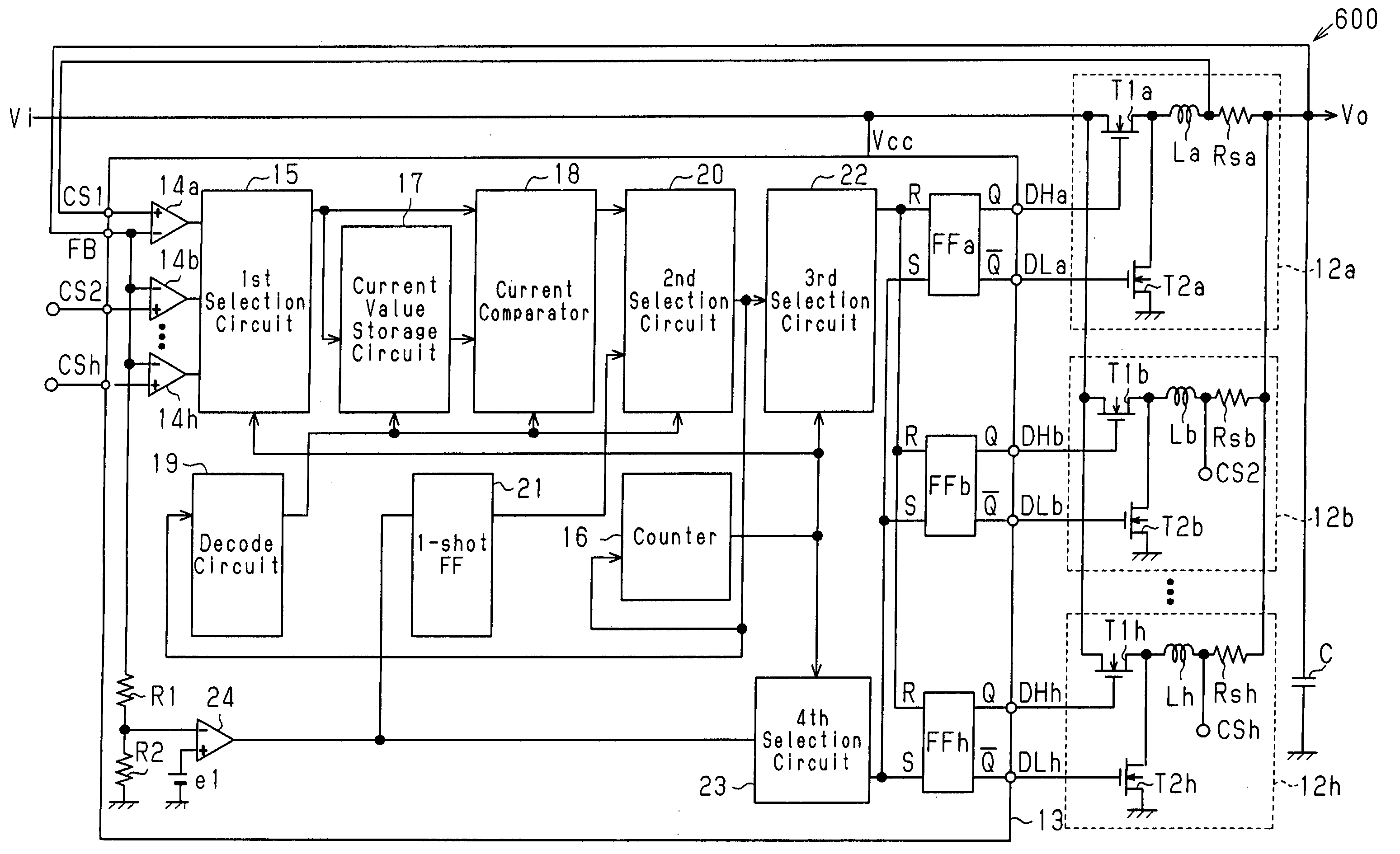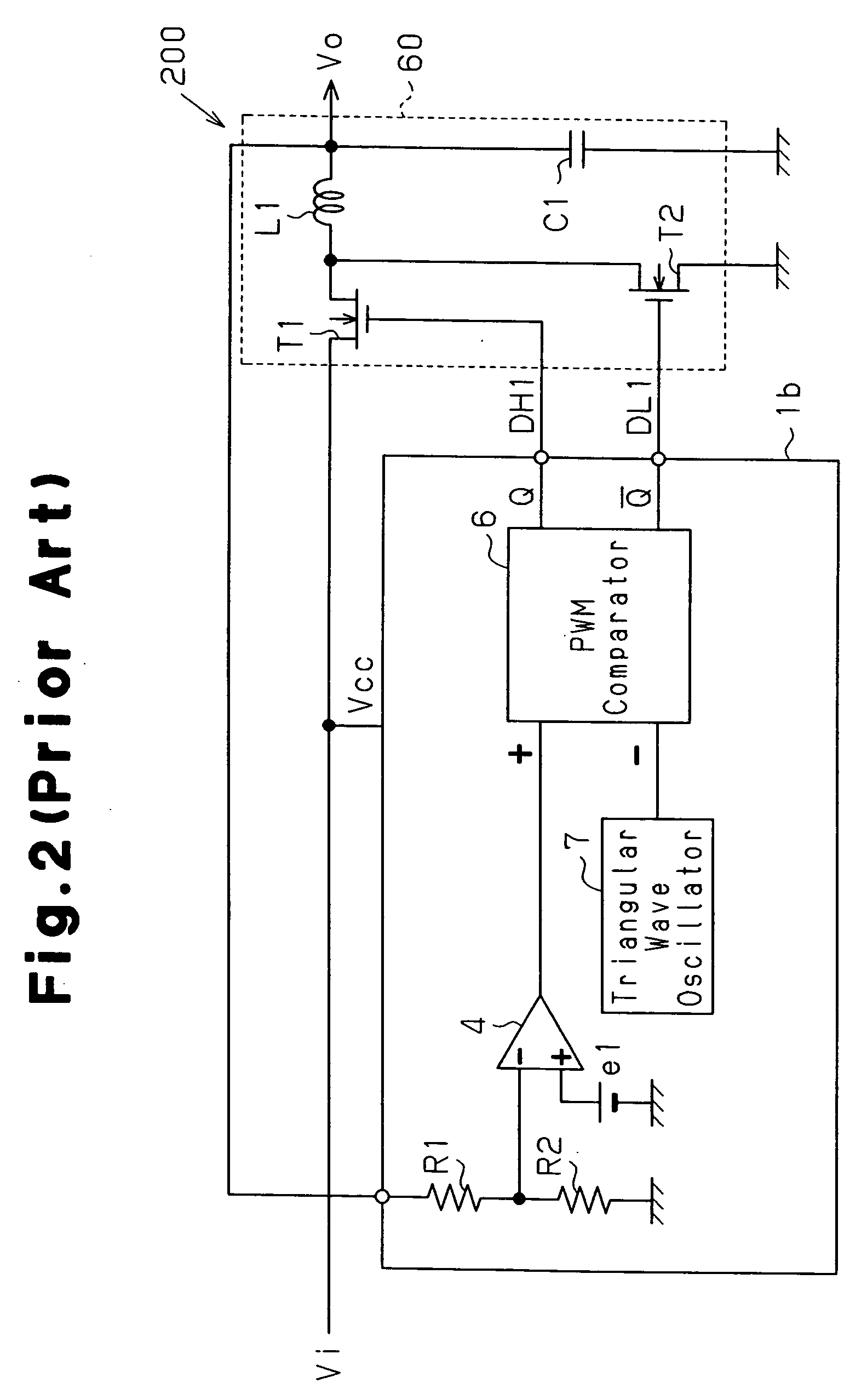Multiphase DC-DC converter
a converter and multi-phase technology, applied in the field of converters, can solve the problems of speed and function, difficult to improve load responsiveness, and increase output current, so as to increase processing speed and function, increase output current, and reduce operational voltage
- Summary
- Abstract
- Description
- Claims
- Application Information
AI Technical Summary
Benefits of technology
Problems solved by technology
Method used
Image
Examples
Embodiment Construction
[0054] In the drawings, like numerals are used for like elements throughout.
[0055]FIG. 6 is a schematic block circuit diagram showing a multiphase DC-DC converter 600 according to a first embodiment of the present invention. The first embodiment is an eight-phase multiphase DC-DC converter. The multiphase DC-DC converter 600 includes eight converter units 12a to 12h, and a control unit 13 for controlling the converter units 12a to 12h. The multiphase DC-DC converter 600 is operable in both the current mode and fixed activation time mode.
[0056] The converter units 12a to 12h have the same structure as the converter unit 50 of the current-mode DC-DC converter 100 in FIG. 1. The converter units 12a to 12h include output transistors T1a to T1h, synchronous rectifying transistors T2a to T2h, choke coils La to Lh, and current detection resistors Rsa to Rsh, respectively. The converter units 12a to 12h share a smoothing capacitor C.
[0057] The control unit 13 includes eight voltage ampli...
PUM
 Login to View More
Login to View More Abstract
Description
Claims
Application Information
 Login to View More
Login to View More - R&D
- Intellectual Property
- Life Sciences
- Materials
- Tech Scout
- Unparalleled Data Quality
- Higher Quality Content
- 60% Fewer Hallucinations
Browse by: Latest US Patents, China's latest patents, Technical Efficacy Thesaurus, Application Domain, Technology Topic, Popular Technical Reports.
© 2025 PatSnap. All rights reserved.Legal|Privacy policy|Modern Slavery Act Transparency Statement|Sitemap|About US| Contact US: help@patsnap.com



